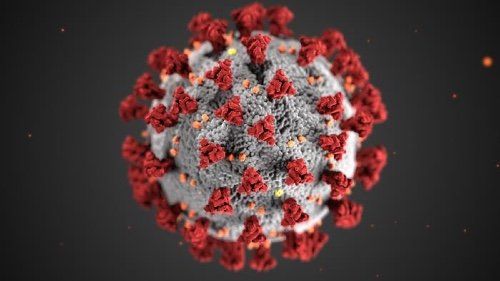CT Findings: Pregnancy and Childbirth Don’t Augment COVID-19 Pneumonia
Scans show no aggravation of symptoms.

Pregnant women already face a litany of heightened health risks. Given the continued outbreak of COVID-19, do they face even more dangers?
In new research from China, published this week in the American Journal of Roentgenology, a team of investigators led by Dehan Liu, from the radiology department at Union Hospital and Huazhong University of Science and Technology in Wuhan, China, examined whether COVID-19 pneumonia created more problems for pregnant women.
In the past, outbreaks of the SARS virus have been particularly dangerous for pregnant women – as many as 25 percent of infected pregnant women died. In addition, if they had swine flu they were four times as likely as the general population to be hospitalized.
To test if COVID-19 affects pregnant women, Liu and colleagues analyzed the clinical data and CT scans from 15 pregnant women, 12-to-38 weeks pregnant, who had also been diagnosed with COVID-19 pneumonia. Overall, they determined that pregnancy and childbirth did not exacerbate the symptoms or CT-identified features of the pneumonia.
“Pregnancy and delivery did not aggravate the severity of COVID-19 pneumonia,” the authors wrote. “In addition, our results raise the question of whether antiviral therapy is necessary for pregnant women with COVID-19 pneumonia and indicate that pregnant patients with COVID-19 pneumonia should be evaluated for potential risks to the fetus considering both drug toxicity and the viral infection.”
During the study, all patients tested positive for SARS-CoV-2, the virus that causes the COVID-19 infection with the reverse transcription polymerase chain reaction (RT-PCR) test. Most presented with fever (87 percent) and cough (60 percent). Thirteen percent showed no clinical signs of COVID-19.
According to the results of the CT scans, most women displayed ground-glass opacities characteristic of early-stage COVID-19. As the disease progress, the scans showed areas of crazy-paving pattern, as well as consolidation. Lesions appeared in the final stage. The lower lobes accounted for most of the disease distribution (96 percent of cases), but the upper lobes were also involved in 52 percent-to-72 percent of cases.
Based on CT scores, patients’ pulmonary involvement changed over time. During early-stage disease, images identified less than 1 percent pulmonary involvement, but it increased to approximately 25 percent for progressive disease and to 26 percent-to-49 percent during the final absorption stage.
Additionally, in all 15 women, COVID-19 symptoms disappeared after antibiotic treatment during pregnancy and antiviral therapy after delivery. Investigators found no evidence or relapse or of symptoms aggravation during pregnancy or after birth. Only one woman continued to test positive via RT-PCR for SARS-CoV-2.
Among the 11 children born during the study, there were no neonatal deaths or suffocation, and none of the children showed any evidence of SARS-CoV-2 infection.
What New Research Reveals About Novice Use of AI-Guided Cardiac Ultrasound
April 4th 2025In a study recently presented at the American College of Cardiology (ACC) conference, researchers found that novice use of AI-guided cardiac ultrasound after an AI-enabled electrocardiogram increased the positive predictive value for reduced left ventricular ejection fraction (LVEF) or aortic valve stenosis by 33 percent.
New AI-Enabled Portable Ultrasound May Facilitate 50 Percent Reduction in Cardiac Imaging Scan Time
March 28th 2025Artificial intelligence (AI)-powered measurement capabilities provide key features with the Compact Ultrasound 5500CV device, which was unveiled at the American College of Cardiology (ACC) conference.
Can Ultrasound-Based Radiomics Enhance Differentiation of HER2 Breast Cancer?
March 11th 2025Multicenter research revealed that a combined model of clinical factors and ultrasound-based radiomics exhibited greater than a 23 percent higher per patient-level accuracy rate for identifying HER2 breast cancer than a clinical model.